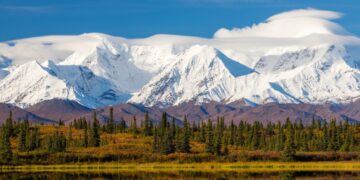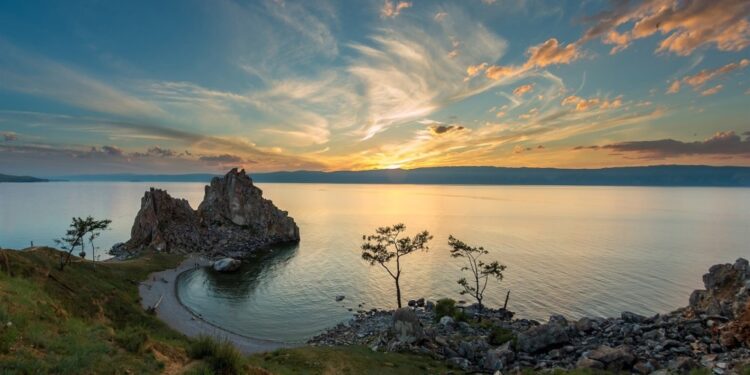A lake is an area filled with water, localized in a basin, surrounded by land, and set apart from any river or other outlet that serves to feed or drain the lake. Lakes can be found everywhere; in mountainous regions, basins, melted glacial areas, and rift zones. They have been formed by glacier movements, landslides, ice-damming, sinkholes, volcanic eruptions, and others are man-made. Depending on where exactly they are located, lakes vary in volume, area and depth.
Bathymetry is the study of the underwater depth of ocean or lake floors, a geographical science that falls under the wider umbrella of hydrography. In essence, it is the underwater equivalent of topography. Contour lines help to represent and study the physical features of bodies of water, from oceans to lakes. Most bathymetric studies are conducted via sonar systems, transmitting pulses that ‘ping’ off the ocean and lake floor, uncovering what lies below.
Here are the top 20 deepest lakes in the world.
| Rank | Lake | Depth |
| 1. | Baikal | 1,642 m (5,387 ft) |
| 2. | Tanganyika | 1,470 m (4,823 ft) |
| 3. | Caspian Sea | 1,025 m (3,363 ft) |
| 4. | Vostok | 1,000 m (3,300 ft) |
| 5. | O’Higgins-San Martín | 836 m (2,742 ft) |
| 6. | Malawi/Nyasa/Niassa | 706 m (2,316 ft) |
| 7. | Issyk Kul | 668 m (2,192 ft) |
| 8. | Great Slave | 614 m (2,015 ft) |
| 9. | Crater | 594 m (1,949 ft) |
| 10. | Matano | 590 m (1,936 ft) |
| 11. | General Carrera-Buenos Aires | 586 m (1,923 ft) |
| 12. | Hornindalsvatnet | 514 m (1,686 ft) |
| 13. | Quesnel | 511 m (1,677 ft) |
| 14. | Toba | 505 m (1,657 ft) |
| 15. | Sarez | 505 m (1,657 ft) |
| 16. | Tahoe | 501 m (1,645 ft) |
| 17. | Argentino | 500 m (1,640 ft) |
| 18. | Kivu | 480 m (1,575 ft) |
| 19. | Salsvatnet | 464 m (1,523 ft) |
| 20. | Nahuel Huapi | 464 m (1,523 ft) |




































































































































































































